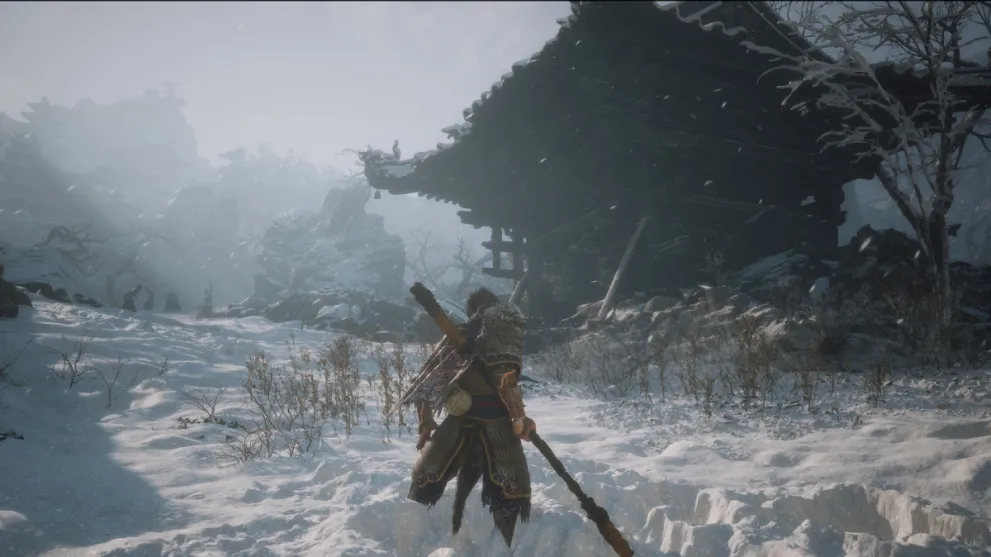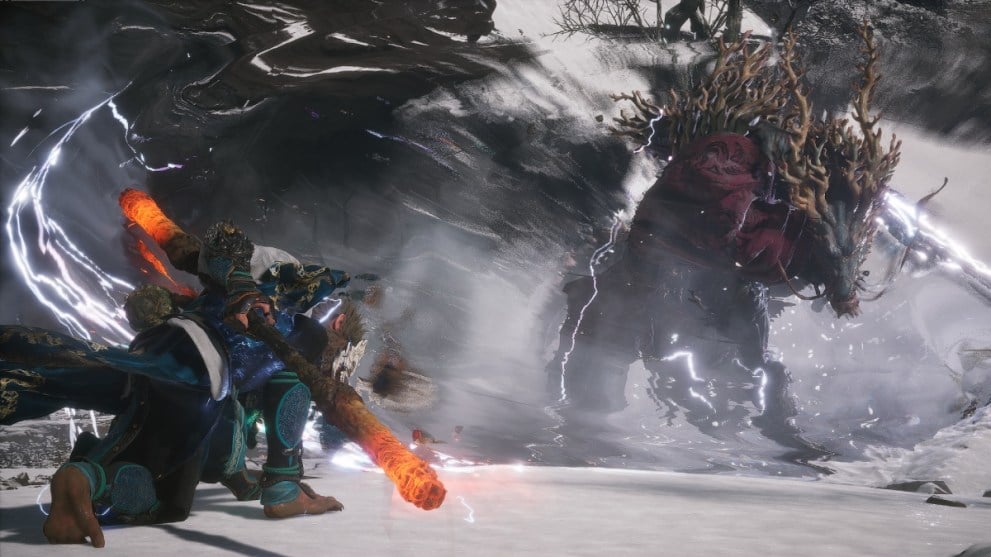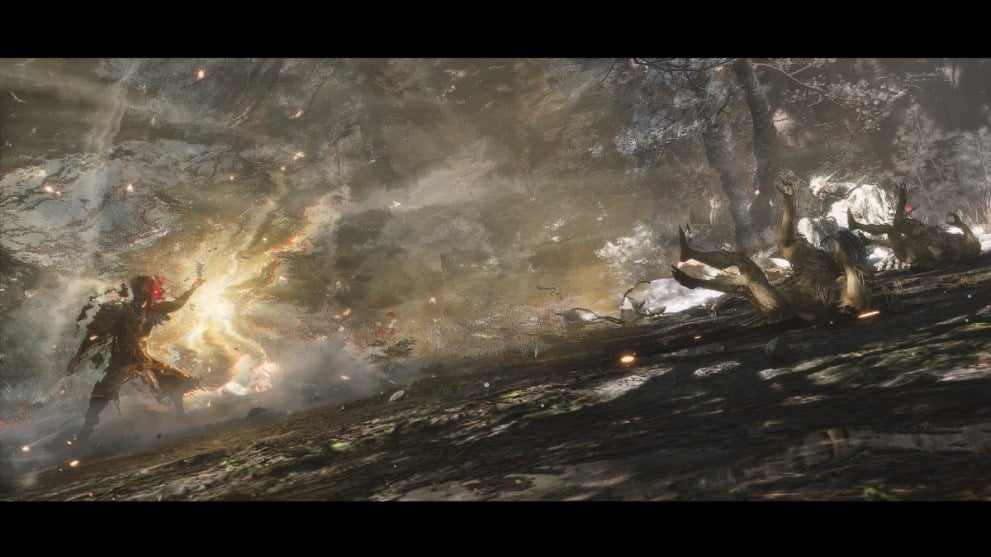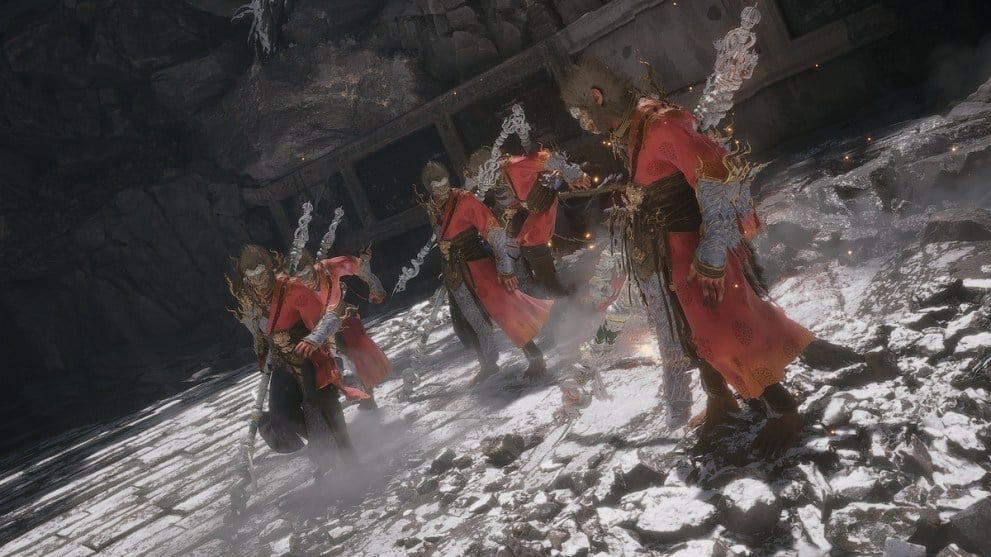There’s a common sentiment I hear from people that despite not being the most innovative, Chinese companies always manage to improve whatever they decide to take inspiration from. During the marketing phase and the several years of hype behind Black Myth Wukong, I’m sure many people viewed it as another Soulslike with pretty graphics and a new setting. However, Black Myth Wukong manages to be much more than that and stands out on its own two legs during a time period where the market feels oversaturated with mediocre soulslike imitations. Game Science has really achieved something impressive with their first AAA release.
To preface this review, we’ve managed to complete the main story in around 36 hours of gameplay while exploring every nook and cranny available. So, let’s get the primary expectations from this game straight. Black Myth Wukong is more akin to Sekiro Shadows Die Twice rather than any Souls game or Elden Ring. The game is also quite difficult but it is by no means as difficult as FromSoftware’s titles and we believe this is a good thing. We’ll get into all the details of how the game manages to be different while remaining true to the genre and remaining accessible.
If you were a fan of the more linear level design from Sekiro Shadows Die Twice, then Black Myth Wukong provides a similar experience. The game is divided into chapters, with each chapter taking place in a brand-new biome and environment. The level designs are relatively linear with a few branching paths here and there. However, all of it looks absolutely stunning and you can really tell that this is a high-budget production with a lot of passion put into it. Levels are a joy to explore whenever you find a new path. My only complaint here would be the excessive use of invisible walls to ward off areas. Sometimes, you’ll see a portion of the map that shouts “Oh I can probably explore this” only to be hit by a random invisible wall. This will happen several dozen times if you’re a completionist or looking to actively explore.

Despite all the graphic fidelity, performance was never an issue, and besides a few frame drops here and there overall performance was incredibly stable for the entire run. The only complaint with the graphic presentation I’d have would be with the lighting. Some areas are incredibly dark while others are way too bright due to the positioning of the light sources. Lighting definitely needs an overhaul, especially during some of the later chapters where it’s honestly jarring at certain points. But overlooking the lighting, every vista and scenery you happen upon will look drop-dead gorgeous. Besides some funny torches early on, all the assets are well-designed and contribute to making each area look alive.
Each chapter is distinct and you’ll be going through various sceneries from lush green mountains and barren deserts to snowy fields of ice. Each chapter is a self-contained story with its own cast of characters and they’re all distinct from one another. At some points in the game, your path is linear, while in others you will have 3 branching paths that seem to branch out even further ahead. Exploration is rewarded with spirits, key items, upgrades, and secret boss fights. The game does a good job of encouraging you to explore every crevice before proceeding to the next area.
Atmospherically, the game delivers on its premise perfectly. From the outstanding voice acting both in Chinese and English, to the amazing score and background music for each area and several boss fights. The game pulls you into this grand world of ancient Chinese Mythology quite naturally and keeps you invested in the Journey. From enemy design to NPCs to bosses and everything in the world, everything in this game contributes perfectly to its premise. Bulls, Boards, Tigers, Dragons, Spiders, and all sorts of mystical Yaoguais, get ready to face the whole Zodiac and much more.

Speaking of enemies and bosses, there are a ton of them and they will be the highlight of your journey. The reason why we compared this game to Sekiro is because of how the enemy and boss distribution is handled. Each stage consists of taking down a few areas with enemies and then it throws a boss or mini-boss at you quickly, and sometimes in succession. There is no shortage of bosses and you can expect a ton of epic battles both with powerful Yaoguai Kings and Yaoguai Chiefs. Even the fights with weaker bosses feel satisfying as they make you feel as if you’ve mastered the combat system rather than the game being too easy.
This difficulty we just mentioned is also another achievement and why this game deserves praise for what it has done. Black Myth Wukong does not reach Elden Ring tiers of difficulty and that’s a good thing. It plays more like a traditional RPG with Souls-like gameplay rather than a hardcore Souls game. However, this does not mean that the game is easy. There are several challenging bosses with complex patterns that can even stump seasoned players for a good while. There are no difficulty settings either, but the game compensates for this by giving you several tools to deal with powerful adversaries.
First of all, you have the main skill trees which keep expanding until you finish the game and you have to invest in it according to your preferred playstyle. Whether you focus more on your physical abilities or spells and transformations early on, the choice is yours. While not all of these upgrades feel meaningful, they stack up over time and many of them will change the way you approach combat. While you have a single attack combo, just like Sekiro, throughout the game, choosing between the three stances(smash, pole, thrust) available and mastering your other skills is rewarding in itself.

Another highlight is the spell system which feels extremely powerful and is only bottlenecked by how much mana you have. You gain access to several spells and you can only slot 4 at a time. Depending on your playstyle, you can pick and choose between immobilization, stone parries, summoning clones, transformations, and a few others. These spells all feel powerful and using them at appropriate times will make the difference between a successful and failed encounter. You’ll figure out your own preference for spells and how you sequence them, which makes the payoffs much more rewarding.
They’ve also managed to make the healing flask a much more integral part of your build. There are several Gourds with unique passives to choose from and you can further equip up to 4 more passives on these flasks for every sip you take. Pair this with the Curios system that lets you stack 2 more passives onto whatever you’re building and there’s a lot of RPG potential to be had just with the types of build you can run. I ran a pure defense build with some respectable damage, but it’s also possible to go all in on Crit and play as a glass cannon. Or maybe you like poisoning yourself for extra attack buffs, there are just a lot of possibilities for those of you who would want to experiments. While the base gameplay is already good and this system is just a cherry on top to make life easier, it could be expanded even further for a true RPG experience.

On top of these spells and passive systems, you also have various armor sets and spirits that you acquire by defeating enemies and bosses. Spirits provide you with powerful passive buffs and you can transform into these enemies briefly to catch enemies off-guard. Last but not least, there’s a fairly easy-to-understand potions and pills system that gives you temporary and permanent buffs. You can prioritize defense, mana, health, or resistance with the pills and stock up on potions to chug them down before tough boss fights. All of these systems come together and allow you to prepare beforehand for any tough boss fight without having to spend a long time grinding, making the game a lot more accessible than it normally would be.
The difficulty is fairly manageable during the first half of the game but quickly ramps up to some almost obscene levels during some boss fights in the final few chapters. The fights seem to become a race against the clock to get your DPS off on the enemy without wasting resources as their patterns become more and more complex, and harder to dodge. Are all the boss fights amazing? No. But they all have a certain degree of polish which makes them hard to dislike due to lazy design. One of the most impressive parts of this game was the fact that there are over 60 bosses stuffed into this 30-hour-long campaign and there is barely any copy-pasting done with their designs. If you’re someone who enjoys challenging bosses and going through gauntlets, then you’ll love Black Myth Wukong.
As for the story and ending of the game, Black Myth Wukong probably requires at least one New Game Plus playthrough to fully experience the story. There are lots of secrets in the game and many decisions that unknowingly change the course of the story. You’re going to want to either be extra careful with anything you do, make use of guides for the story elements, or just play through it multiple times to figure out alternate outcomes. While the first ending I got was epic in terms of the final boss and build-up, it still left me wanting much more.
Black Myth Wukong
Black Myth Wukong is a true AAA experience that blends the intensity of Sekiro with the accessibility of Modern RPGs bundled in a well polished package.
Pros
- Excellent gameplay loop that keeps expanding
- Difficult but accessible through various RPG systems
- Stunning visuals and vistas
- A treat for people who love tons of boss fights
Cons
- 30 hours campaign might feel too short for some
- Endings can feel complex
A copy of this game was provided by the publisher for review. Reviewed on PlayStation 5, Xbox Series X and Series S, Microsoft Windows.
